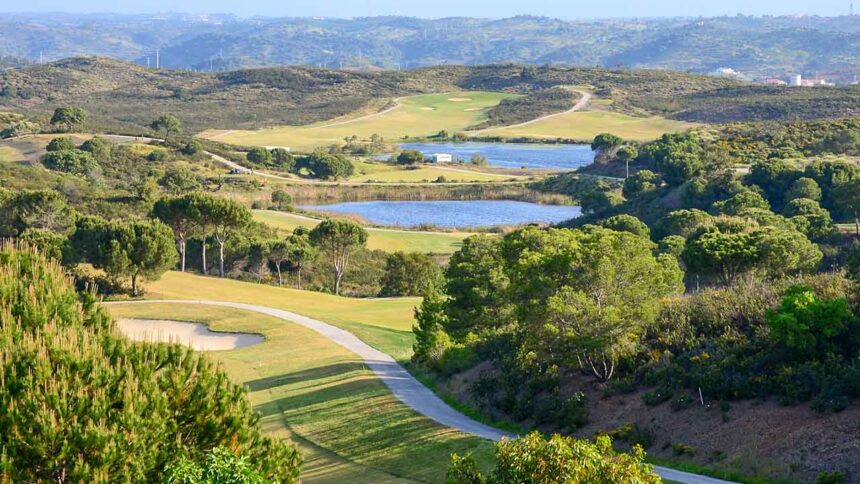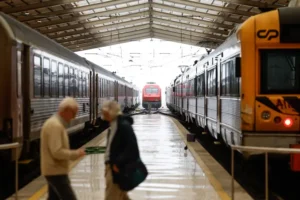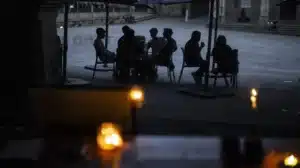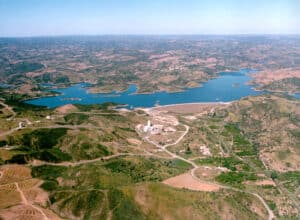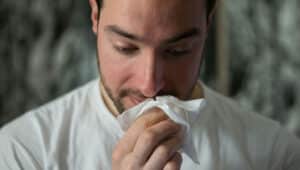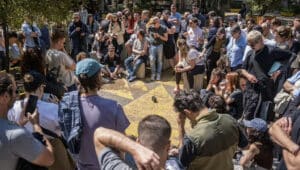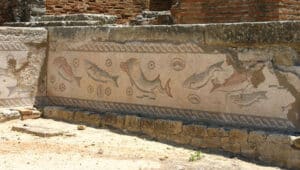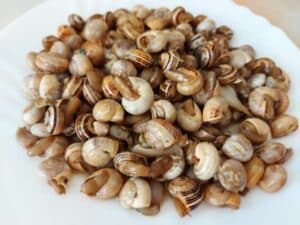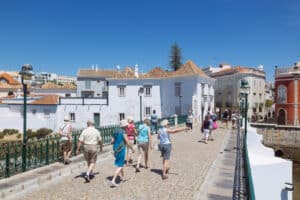Saltwater leaking into drainage systems is jeopardising re-use of treated wastewater
The inspired solution to use treated wastewater to irrigate Algarve golf courses as the region suffers from drought/ low rainfall and dwindling underground reserves has come up against a major hazard: salinity in the treated wastewater.
Salt is not good for grass. Due to the fact that it is clearly present in the treated wastewater available to Sotavento courses, they have had to use much less of it than everyone had hoped: 70% less, to be exact.
A report by Lusa today, cites management entity Águas do Algarve saying: “Given the concentration of salinity in the wastewater and, consequently, in the treated effluent and in the water for reuse (it should be noted that salinity is not removed at the Vila Real do Santo António wastewater treatment plant), it is only possible for the Castro Marim golf courses (Castro Marim Golfe & Country Club and Quinta do Vale) to reuse around 30% of what was planned.”
Diagnostic work is being carried out by the entities managing the supply networks in Castro Marim and Vila Real de Santo António – and so far results obtained have confirmed that “in some situations, there is salt water entering the drainage systems of the low network“.
It is quite common for seawater to ‘travel inland’ when underground reserves of freshwater become dramatically reduced. Owners of coastal properties using boreholes are only too well aware of the issues of pumping up water that is found to be ‘too salty’.
Águas do Algarve explains that it had hoped the two golf courses in Castro Marim could reuse “0.6 cubic hectometers (hm3) per year, which could rise to around 0.87 hm3 per year under extreme conditions”.
Castro Marim council and Águas de Vila Real de Santo António – the two entities managing the low-level networks – are carrying out work using technology and video cameras to identify points where the saltwater is coming in – and to “outline interventions to correct” the problems detected, explains Lusa.
“This situation is particularly relevant for the Vila Real de Santo António wastewater treatment plant, since the presence of high salinity in the effluent and, consequently, in the water for reuse, strongly conditions its use for irrigation – in this case of the two golf courses in Castro Marim,” admits Águas do Algarve.
But Lusa learns that this is not simply a problem in the Sotavento Algarve. Other areas of the region are just as affected, all the way to the west.
Right now, there is no date for when the Castro Marim/ VRSA problem can be fixed: “Only after diagnostics have been carried out – which is estimated to be completed in the first half of this year – will data be known that will allow the interventions and respective budgets to be defined.
“Solving this problem is primarily the responsibility of the entities that manage the lower networks”, says Águas to Algarve “but the company is making itself available in various ways to support and participate in this process,” adds Lusa’s source “acknowledging that the problem of saline intrusion into the drainage networks occurs in areas such as Tavira, Olhão, Faro, Portimão and Lagos.”
Lusa questioned both Castro Marim and VRSA “but only Castro Marim replied, through the deputy mayor, Filomena Sintra, who said that “a number of points have already been identified, with different pathologies, and with interventions that will also have to be different.
“What’s next is to draw up specifications for an intervention to create the necessary watertightness,” she said, adding that Águas do Algarve will collaborate in terms of public procurement procedures and drawing up specifications.
Asked about the investment needed, Filomena Sintra replied that, “from the outset, there are €500,000” for Castro Marim to ‘intervene in this area, under the mechanisms of the Council of Ministers’ resolution that declared a drought alert in the Algarve, but it will be necessary to wait for the diagnostic work to be completed to find out if this amount is sufficient”.
Meantime in Lisbon, Pimenta Machado vice-president of Portuguese Environment Agency APA, has been warning of the likelihood more ‘extreme’ bad weather (of the type the country has been experiencing in the last few days, particularly badly in areas around Lisbon). He emphasised the importance of “creating more green areas to increase infiltration, increase retention basins“, and made a point of stressing that the Algarve is still experiencing “the worst drought ever”, despite recent rains.
Portugal has also lost an area of 12.2 sq kms to the sea – “equivalent to 1,700 football pitches”, while 20% of the coast, translating into 180 kms, is at risk of coastal erosion.
“This war between the land and the sea has always existed, but it is now being fuelled by climate change,” he warned, defending the need “not to increase construction on the coast” and to focus on “putting sand on the beaches” instead of, as in the past, “a lot of heavy works, spurs and breakwaters”.
Source material: LUSA

